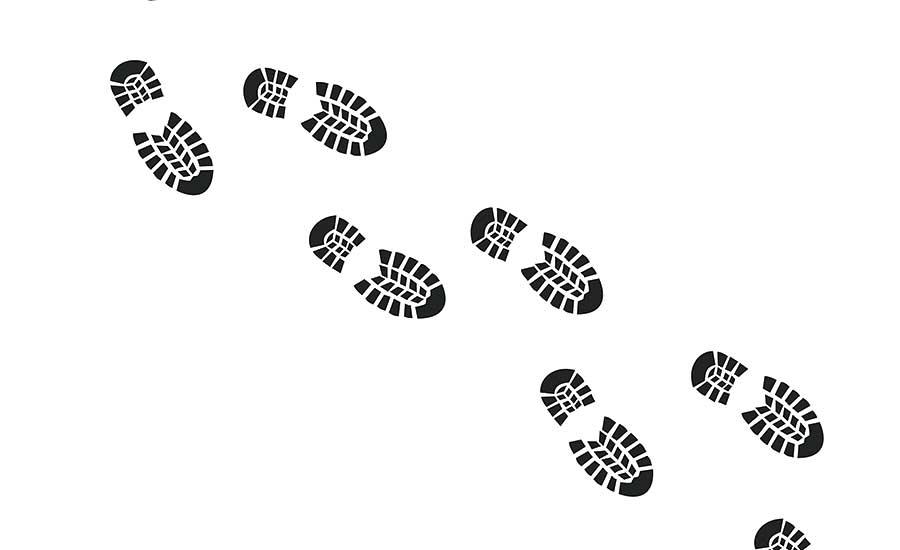Seriously, walking 10,000 steps every day?
Walking from Maine to Colorado isn’t for everyone

You probably know that walking 10,000 steps a day is the new “magic metric” for the health-conscious. Ten years ago if you asked someone how many steps a day they should walk, you’d get a shoulder shrug. Nobody counted steps. That was before the age of the “quantified self.”
Now, thanks to ever-more sophisticated wearables, we can track and measure every beat of our heart, every minute of our sleep, how many miles we’ve walked, how many stairs we’ve climbed, how many pounds we’ve lost. As they say, “it’s all good.” A 2010 study reported that walking greater distances improved cardiovascular health, personal growth (whatever that means) and other contributors to healthy living. The American Heart Association says a brisk walk can lower high blood pressure, high cholesterol, and diabetes if performed and maintained over time.
Talking the walk
That’s the key caveat — “if performed and maintained.” The buzz around the magic 10,000 indeed has more people talking about taking the stairs more, walking the parking lot at lunch, parking farther from the office, maybe getting to know their dog better on walks, doing more gardening and weeding, and maybe being more sociable – walking over to visit a neighbor, walking with your spouse and/or kids, walking to a meeting or to a store. Leave the car in the driveway.
To be sure, I don’t want to make light of the value of exercise. It can’t be denied and ought to be encouraged wherever and whenever. But I also think there’s a danger in setting goals too lofty and grandiose. This frequently happens in safety. “We’re going to do 1,000 observations a month.” “We’re going to find and fix 1,000 hazards.” “Our goal is to increase near-miss reporting one hundred percent.”
I’m not even getting into the zero injury goal, for of course, what other goal can you have.
Let’s get real
But for all the talk about walking and the need to stop sitting around – get up and change the TV channel, don’t use the remote – I question how many folks are actually walking 10.000 steps a day. That may be the buzz; it’s also means five miles every day of walking. How many people do that? It’s like walking from Portland, Maine to Denver, Colorado – 1,825 miles – in a year. Not many people are going to make that trek, or anything close to it.
There are exceptions: chasing small children around the yard and house every day; working as a mail man; being a college student criss-crossing a large campus daily sans car ownership – an increasingly rare breed I admit; or being a farmer, a hospital nurse or orderly, or in the military.
Being overly optimistic
I wonder how many folks with a brand new fitness wearable head out to the mall, make a couple loops striding around the stores, look at their wrist and shake their head: “What, that was only 4,234 steps in two hours?!”
There’s a risk in shooting too high with New Year’s resolutions, weight loss goals, exercise goals – just about any goal you can think of is susceptible to our tendency to be overly-optimistic. How many companies fall short of their sales and profit goals every quarter? How many movies tank beyond all expectation at the box office? How many teams fail to reach their expected win total?
Discretionary goals
Businesses may miss their mark and disappoint analysts and shareholders, but they’re not going to fold up shop. Filmmakers will continue making films. There’s always next season for sports teams. But when we come up short on personal goals, particularly what I’d call discretionary goals that won’t kill us if we don’t achieve ‘em, like walking 10,000 steps a day, there’s the irrefutable urge to bail out.
Let’s talk about engagement. How many of us remain actively engaged in going to the gym, dieting, or tracking our every step if we don’t hit the magic number, whatever that may be? One research firm reported that about a third of owners of smart wearables put their devices away in a drawer within six months of purchasing them. One wearable manufacturer publicly reported that out of 19 million registered users, only 9.5 million were active. And active can mean walking 100 steps a day or simply hooking your device up to its related app.
We fail, we bail
One day at a time. Any number of people with long-term goals take it one day at a time. On-the-job safety isn’t taken for granted, it’s worked on one day at a time. Sure, you have long-term “visions” and ways of incrementally ramping up toward lofty goals. A couch potato is not going to walk 10,000 steps tomorrow. And there is something to be said for stretch goals, if you have sufficient commitment and will, among other variables. But OK, I’m being heretical here: Some health-related goals – especially if not related to a life-threatening medical condition that must be confronted – the bar is just set too high. Then when we fail, we bail. How many employees check out of a safety campaign if they know the goal is unrealistic? How many stick with wellness activities?
So yes, let’s have the “vision” of sleeping eight hours a night, not eating after eight o’clock at night, getting in 30 minutes of fairly strenuous exercise five times a week, walking when we really don’t have to drive, eating more fruits and veggies. But like the vision of zero injuries, let’s take it day by day, start with realistic self-awareness, and literally walk before we run. Forget about walking across the country, ultra-competitors excluded. Enjoy the walk, the hike, taking the stairs, leaving the car at home. You’ll know if you’re feeling healthier, more fit, maybe a little slimmer. You won’t have to do calculations.
Looking for a reprint of this article?
From high-res PDFs to custom plaques, order your copy today!






